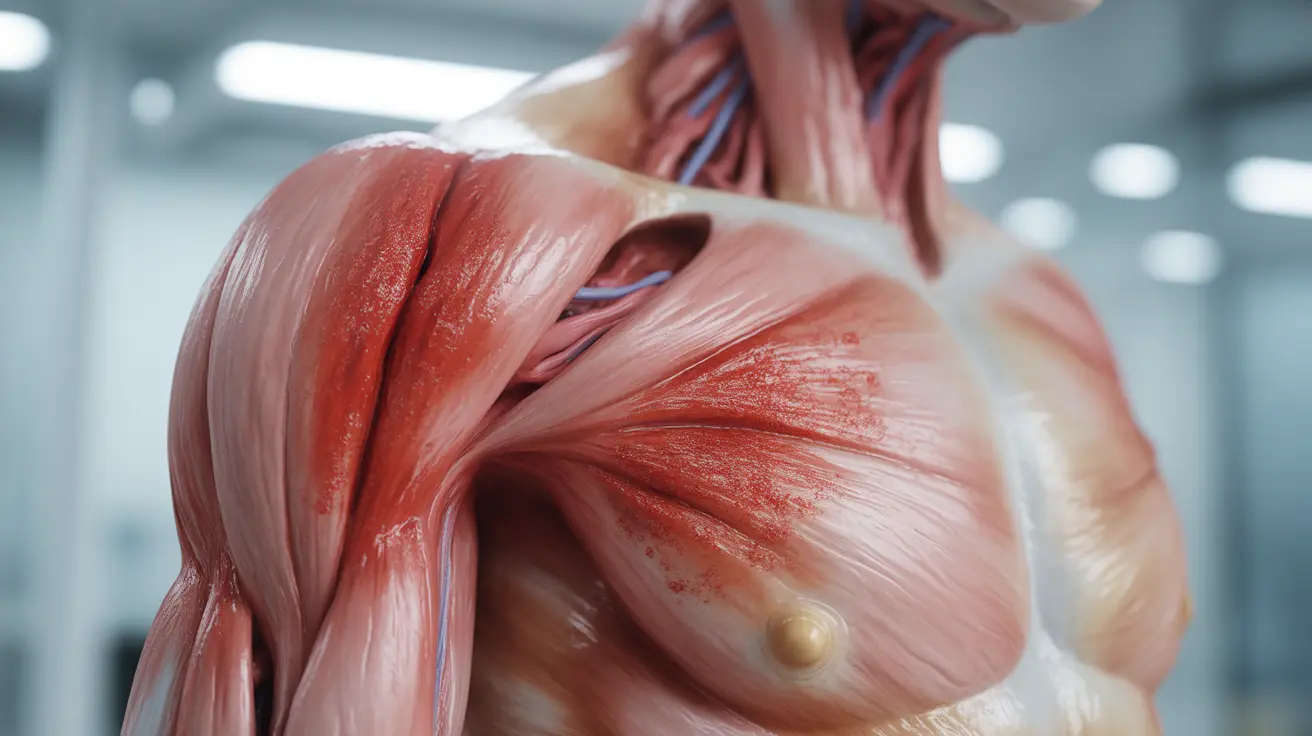Phlegmon is a serious inflammatory condition that occurs when an infection spreads through soft tissue, creating a painful area of inflammation without a distinct border or encapsulation. Unlike more contained infections, phlegmon can be particularly concerning because of its potential to spread rapidly through tissue planes, making prompt recognition and treatment essential.
This comprehensive guide will help you understand what phlegmon is, its symptoms, causes, and available treatment options, along with important information about prevention and risk factors.
What is Phlegmon?
Phlegmon is characterized by spreading inflammation in soft tissues that results in swelling, redness, and pain. Unlike an abscess, which forms a distinct pocket of pus with clear boundaries, phlegmon presents as a more diffuse inflammatory process that can affect various parts of the body, including the throat, dental areas, and extremities.
Key Symptoms and Signs
Recognizing the symptoms of phlegmon early is crucial for proper treatment. Common signs include:
- Spreading redness and warmth in the affected area
- Significant swelling and tenderness
- Intense pain that may worsen with movement
- Fever and general malaise
- Skin that feels firm or hard to the touch
- Possible limited range of motion if near joints
Causes and Risk Factors
Phlegmon typically develops when bacteria enter soft tissue through breaks in the skin or spread from nearby infections. Several factors can increase your risk of developing phlegmon:
- Recent injuries or trauma
- Dental infections
- Weakened immune system
- Chronic health conditions like diabetes
- Poor wound care
- Previous surgery in the affected area
Diagnosis and Medical Assessment
Healthcare providers diagnose phlegmon through physical examination and various diagnostic tools:
- Clinical evaluation of symptoms
- Blood tests to check for infection markers
- Imaging studies (CT scan, MRI, or ultrasound)
- Culture samples when possible
Treatment Approaches
Treatment for phlegmon typically requires a multi-faceted approach:
Medical Management
The primary treatment usually involves:
- Broad-spectrum antibiotics to fight the infection
- Pain management medications
- Regular monitoring of the condition's progression
- Possible hospitalization for severe cases
Surgical Intervention
In some cases, surgical treatment may be necessary:
- Drainage procedures
- Debridement of infected tissue
- Management of underlying conditions
Prevention Strategies
While not all cases of phlegmon can be prevented, several measures can help reduce your risk:
- Proper wound care and hygiene
- Prompt treatment of minor infections
- Regular dental check-ups and care
- Management of underlying health conditions
- Maintaining a strong immune system
Frequently Asked Questions
What are the symptoms of phlegmon and how can I tell if I have it? Phlegmon typically presents with spreading redness, warmth, and swelling in the affected area, accompanied by significant pain. You may also experience fever and general illness. Unlike an abscess, the affected area will feel firm rather than fluctuant, and the boundaries of the inflammation will be poorly defined.
What causes phlegmon and who is most at risk of developing it? Phlegmon is caused by bacterial infections that spread through soft tissue. People at higher risk include those with weakened immune systems, diabetes, recent injuries or surgeries, and untreated dental infections. Poor wound care and delayed treatment of minor infections can also increase risk.
How is phlegmon treated, and will I need antibiotics or surgery? Treatment typically involves broad-spectrum antibiotics as the primary approach. Depending on the severity and location, surgical intervention may be necessary for drainage or debridement. Most cases require close medical monitoring, and severe cases may need hospitalization.
How is phlegmon different from an abscess, and why does this matter for treatment? Unlike an abscess, which forms a contained pocket of pus with clear boundaries, phlegmon is a spreading inflammation without distinct borders. This difference affects treatment approach - while abscesses typically require drainage, phlegmon often responds to antibiotics alone, though some cases may still need surgical intervention.
Can phlegmon be prevented, and what steps can I take to lower my risk? While not all cases can be prevented, you can lower your risk by maintaining good hygiene, promptly treating minor infections and injuries, getting regular dental check-ups, and managing underlying health conditions. Keeping your immune system strong through healthy lifestyle choices is also important.




